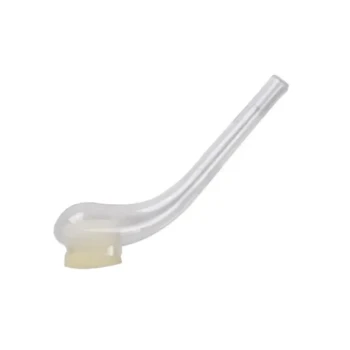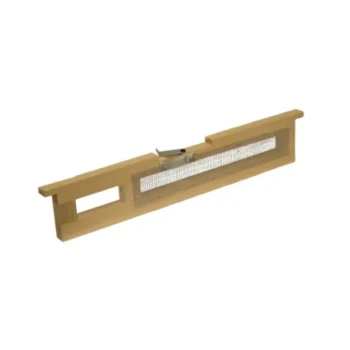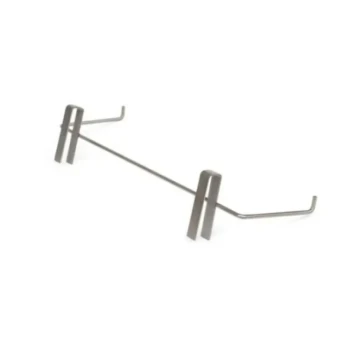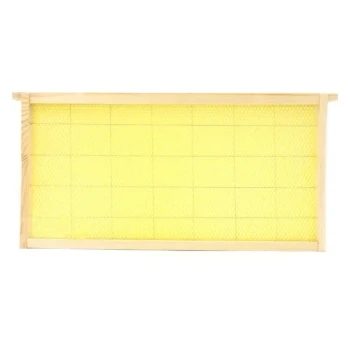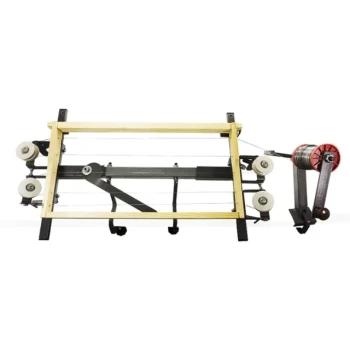To put it simply, a tube queen cage is a specialized beekeeping tool designed to gently and safely immobilize a queen bee. It consists of a tube that the queen is guided into and a soft, padded plunger that carefully presses her against a mesh end, allowing the beekeeper to mark her without causing injury.
The core function of a tube queen cage is to trade speed for accuracy. It provides a highly controlled and safe environment for marking a queen, which is essential for effective hive management, even though it requires more deliberate handling than other methods.
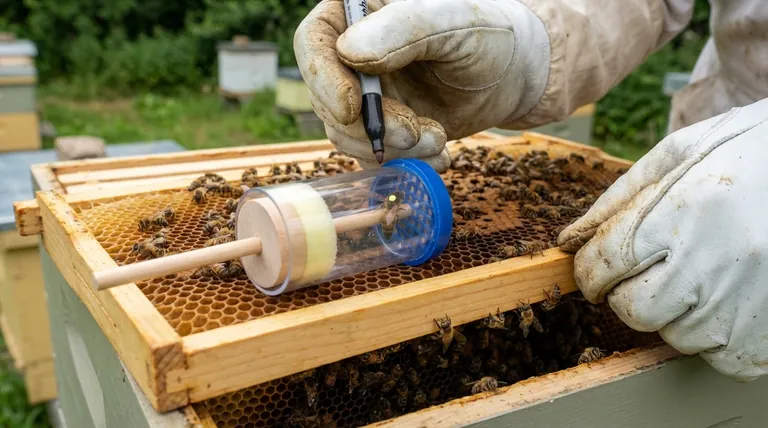
The Purpose and Mechanics of a Tube Queen Cage
A Tool for Safe Immobilization
The primary goal of this device is to hold the queen perfectly still. This prevents her from flying away or getting injured during the sensitive process of marking her thorax.
How It Works
The design is straightforward. The beekeeper guides the queen into the open end of the clear tube. Then, a foam-padded plunger is slowly pushed forward, gently pressing the queen against the opposite, grated end of the tube.
This gentle pressure holds her motionless, exposing her back (thorax) through the grate. The beekeeper can then apply a dot of paint easily and accurately.
The Importance of Caging
More broadly, queen cages are fundamental to beekeeping. They protect a new queen from being attacked by worker bees when she is first introduced to a colony, as they might perceive her as a foreign threat.
Without a cage, a queen could be immediately killed by the existing bees, wasting time and resources and potentially harming the colony's long-term health.
Understanding the Trade-offs
Accuracy Over Speed
The tube queen cage is favored by beekeepers who prioritize a perfect marking job. It allows for meticulous work, ensuring the mark is placed correctly and the queen is completely unharmed.
This methodical approach makes it less suitable for operations where many queens must be processed in a short amount of time.
Requires Two-Handed Operation
A key limitation is that this tool requires both hands to operate effectively. One hand holds the tube while the other guides the plunger.
This means the beekeeper cannot simultaneously hold a frame or perform other tasks, making it a more deliberate and stationary procedure compared to one-handed queen clips.
Making the Right Choice for Your Goal
Choosing the right tool depends entirely on your specific task and experience level.
- If your primary focus is safety and precision: The tube queen cage is an excellent choice for carefully marking a single, valuable queen without risk of injury.
- If your primary focus is speed or field convenience: A one-handed queen catcher or marking pen might be more suitable for quick checks and marking in the apiary.
Ultimately, selecting the correct equipment ensures both the well-being of your queen and the success of your hive management.
Summary Table:
| Feature | Description |
|---|---|
| Primary Use | Safely immobilize a queen bee for marking or introduction. |
| Key Benefit | Maximum precision and safety for the queen, minimizing injury risk. |
| Best For | Beekeepers prioritizing accuracy over speed for valuable queens. |
| Operation | Requires two-handed use; guides queen into a tube with a soft plunger. |
Upgrade your queen handling with professional-grade equipment from HONESTBEE.
For commercial apiaries and distributors, precise and safe tools are non-negotiable for protecting your valuable queens and ensuring hive productivity. HONESTBEE supplies the durable, reliable beekeeping supplies you need for efficient and successful operations.
Contact our wholesale team today to discuss your equipment needs and learn how we can support your business.
Visual Guide

Related Products
- Plastic Queen Marking Tube Cage with Plunger for Beekeeping
- Plastic Queen Bee Catcher Marker Tube Holder for Queen Marking Bottle
- Professional Queen Catcher and Introduction Queen Cage
- Professional Wooden Requeening Frame for Beekeeping
- JZBZ Langstroth Queen Rearing Frame for Beekeeping
People Also Ask
- How does a press-in cage work for marking a queen bee? A Safer, Simpler Method for Beekeepers
- Why are Posca pens commonly used for marking queen bees? The Safest, Most Durable Method for Beekeepers
- What are the advantages of using Uni-Posca markers for Queen marking? A Safe, Precise, and Efficient Solution
- What should be done after marking a Queen bee? Ensure a Safe Return and Hive Harmony
- What is the purpose of marking queen bees with colors? Essential for Hive Management & Efficiency


